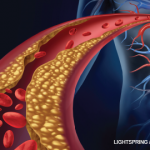
Little John was elated. Christmas Day had finally arrived in Birmingham, England. He scurried out of bed to the living room where his family’s evergreen tree stood, shimmering with shiny ornaments. Beneath its branches, he spotted what he was looking for; an oblong shaped box. As he tore through the plain brown paper wrapping, he couldn’t contain his excitement.
“Wow, a chemistry set!” What 12-year-old kid wouldn’t be thrilled?
John’s parents, a Russian immigrant married to an English Midlands farmer’s daughter, had carefully considered what gift to purchase for their son. After all, they had struggled hard to achieve middle class status, and they hoped their talented son would one day far surpass their social standing.
John took to chemistry in a flash. In fact, one of his earliest experiments, which involved the creation of hydrogen sulfide gas, caused a minor explosion, turning the newly painted decor of his “laboratory” (better known as the family kitchen) from a pale shade of blue to a slimy green. Rather than being angry, his father, who ran a small business building small portable sheds, erected a shed next to their house and equipped it with a laboratory bench and real gas and water lines. The Bunsen burner could finally be disconnected from the kitchen stove.
John loved to dabble with his chemistry set, and when it came time to apply to college, he chose to study chemistry at the University of Birmingham. Much to his chagrin, he discovered that experimentation in chemistry was nonexistent at the university.1 Unhappily, he persisted in his studies. As graduation neared, the chair of the chemistry department questioned John about his future career plans. “Anything but chemistry” was his acerbic reply. Recognizing his true talent, the chair suggested that John pursue training in the emerging field of pharmacology.
John recalled, “Without hesitation, I grasped the opportunity and immediately went to the library to find out what pharmacology was all about.” The library. Yes, this is where people went looking for information before there was Google.
Attention all parents: That Christmas gift chemistry set paid handsome dividends. Thirty-three years after its purchase, John Vane was awarded the 1972 Nobel Prize in Physiology and knighted for his groundbreaking work in deciphering how aspirin works. In his Nobel lecture, Vane fondly recalled his aha moment:1
It was this experiment that led me to the idea (over the weekend) that aspirin might be interfering with prostaglandin biosynthesis. On the Monday morning I said … “I think I know how aspirin works” and set about doing an experiment. I homogenized some guinea pig lungs, spun off the cell debris, divided the supernatant into test tubes, added arachidonic acid and measured by bioassay the amounts of (prostaglandin) PGE2 and PGF2alpha formed. By the end of that day, I was convinced that aspirin and indomethacin (but not morphine) strongly inhibited the formation of prostaglandins from arachidonic acid.

